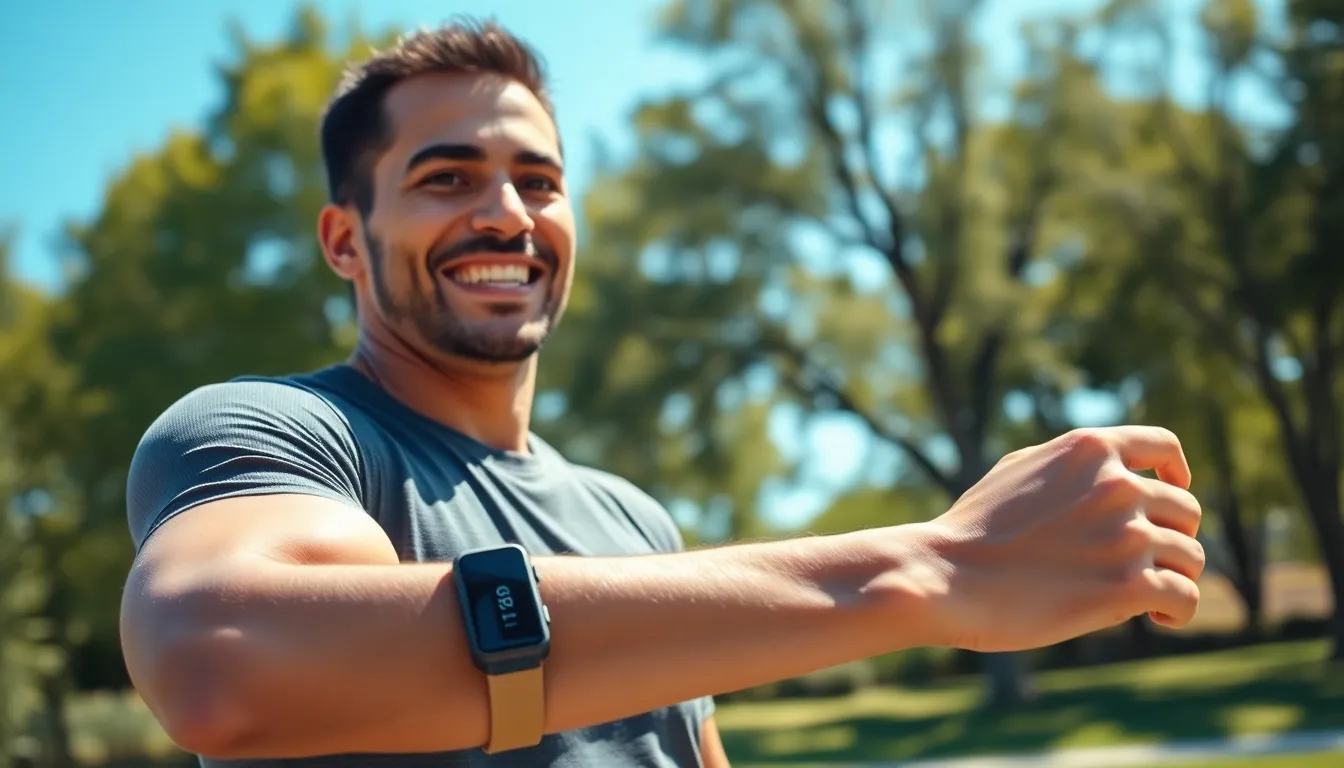In a world where tracking every heartbeat and step has become the norm, why not add a little oxygen to the mix? Enter the wearable oxygen monitor, the gadget that’s as essential as your morning coffee but without the jitters. This nifty device keeps tabs on your oxygen levels, ensuring you’re not just breathing but thriving.
Imagine strutting around with a high-tech accessory that not only looks cool but also gives you peace of mind. Whether you’re a fitness fanatic or just someone who enjoys a good Netflix binge, knowing your oxygen saturation can be a game-changer. So why not join the ranks of the oxygen-savvy? It’s time to breathe easy and let technology do the heavy lifting.
Table of Contents
ToggleOverview of Wearable Oxygen Monitors
Wearable oxygen monitors provide individuals with real-time data on oxygen saturation levels. These devices track SpO2 percentages, indicating how effectively oxygen is circulating in the bloodstream. Users find this information valuable, as low oxygen levels can signal underlying health issues.
Many wearable oxygen monitors incorporate advanced sensors that ensure accuracy and reliability. These sensors measure light absorption in the blood to calculate oxygen levels. Continuous monitoring benefits athletes by optimizing their training sessions and helping detect potential problems early.
Fitbit, Apple, and Garmin offer wearable devices with integrated oxygen monitoring features. While these brands emphasize a variety of health metrics, the oxygen monitoring capability stands out in enhancing user understanding of their health. These monitors cater to casual users and fitness enthusiasts seeking insights into physical performance and overall wellness.
Some devices provide additional functionalities, such as heart rate monitoring and sleep tracking. Combining these features creates a comprehensive health overview, allowing users to make informed decisions about their lifestyles. Data collected by wearable oxygen monitors can guide personal fitness goals and inform healthcare providers about patient conditions.
Developers continue to innovate within this space, creating more user-friendly and efficient devices. Friends and families can share health data easily, fostering community support for well-being endeavors. Environmental factors, like altitude changes or air quality, can also affect oxygen levels, which these monitors can help track.
These devices play a significant role in preventative healthcare by promoting awareness and encouraging proactive health management.
Benefits of Using Wearable Oxygen Monitors

Wearable oxygen monitors offer significant advantages for individuals concerned about their health and fitness. These devices permit real-time tracking of oxygen saturation levels, providing users with valuable insights.
Health Monitoring
Health monitoring represents a primary benefit of wearable oxygen monitors. Users receive continuous data on their SpO2 percentages, which can indicate how efficiently oxygen circulates in the bloodstream. Detecting low oxygen levels helps individuals recognize potential health issues early. Early detection can prompt timely interventions, allowing users to seek medical advice if necessary. Additionally, many monitors integrate advanced sensors for enhanced accuracy. This precision ensures reliable readings, which health professionals can use to assess patient conditions. Overall, continuous monitoring of oxygen levels empowers individuals to manage their health proactively.
Fitness Tracking
Fitness tracking also stands out among the benefits of wearable oxygen monitors. Athletes utilize these devices to optimize their training sessions by monitoring oxygen saturation during exercises. Enhanced performance relies on understanding how workouts impact oxygen levels. Users can adjust their routines in real time based on data, leading to improved endurance and recovery. Furthermore, tracking elevates personal fitness goals by identifying optimal training zones. With features that include heart rate monitoring, wearable oxygen monitors provide a comprehensive view of fitness levels. As a result, users gain a better understanding of their bodies and can make informed adjustments to their programs.
Key Features to Consider
When selecting a wearable oxygen monitor, various key features significantly influence user experience and effectiveness.
Accuracy and Reliability
Accuracy stands as a top priority for wearable oxygen monitors. These devices must provide precise SpO2 readings to ensure users receive reliable data. Advanced sensors play a crucial role in maintaining measurement consistency, especially during physical activities. Monitoring accuracy becomes essential for athletes aiming to optimize performance through real-time data. Reliable devices help users detect potential health issues early, leading to timely interventions. A user might find an oxygen monitor with an accuracy rate of 95% or higher to be beneficial for maintaining optimal health.
Battery Life
Battery life represents another important feature in wearable oxygen monitors. Users may prefer devices with extended battery durations that can last multiple days between charges. Monitors offering 24 to 48 hours of continuous use cater to those needing persistent tracking during activities. Long-lasting batteries minimize interruptions, allowing users to maintain a consistent monitoring routine. Choosing a model with an efficient power management system enhances overall usability, making the device more convenient for daily wear. A balance between performance and battery longevity enhances the user experience.
Popular Wearable Oxygen Monitors on the Market
Fitbit Charge 5 stands out with its accuracy in measuring oxygen saturation levels. This device features a bright AMOLED display and integrates heart rate monitoring for a comprehensive health overview. Garmin Venu 2 also offers oxygen tracking alongside fitness features, such as built-in GPS and an array of workout modes. Its long battery life ensures users can monitor their levels without frequent recharging.
Apple Watch Series 7 excels in providing detailed health metrics, including SpO2 readings. Users appreciate its seamless integration with iOS, enhancing the overall user experience. Samsung Galaxy Watch 4 incorporates oxygen monitoring into its suite of health tools, along with advanced sleep tracking capabilities. It appeals to users seeking a device for both health monitoring and daily activities.
Oura Ring, a unique alternative, includes oxygen monitoring within its stylish design. It’s favored by individuals who prefer minimalism without sacrificing functionality. Withings Beam focuses on delivering precise readings and offers a companion app for tracking trends over time. Many find its user-friendly interface helpful for managing overall health.
Credible brands dominate the market by offering devices equipped with advanced sensors and additional health metrics, maximizing the benefits of wearable oxygen monitors. These monitors are invaluable for both fitness enthusiasts and casual users aiming to maintain optimal oxygen levels.
Wearable oxygen monitors represent a significant advancement in personal health technology. By providing real-time insights into oxygen saturation levels, these devices empower users to take control of their health and fitness. The ability to track SpO2 levels not only benefits athletes but also aids casual users in recognizing potential health issues early.
With a variety of models available from reputable brands, individuals can find a device that suits their specific needs. Whether it’s enhancing training sessions or simply maintaining overall wellness, integrating a wearable oxygen monitor into daily life can lead to informed decisions and improved health outcomes. Embracing this technology is a step toward a healthier future.






